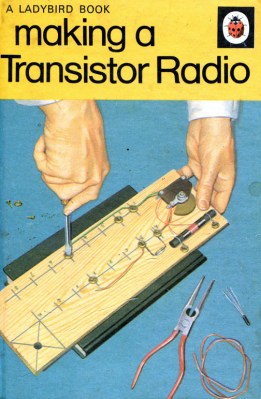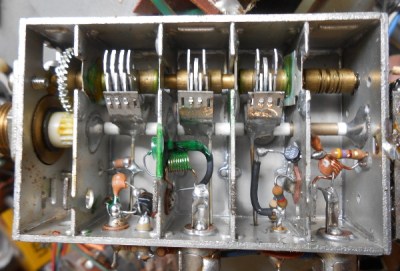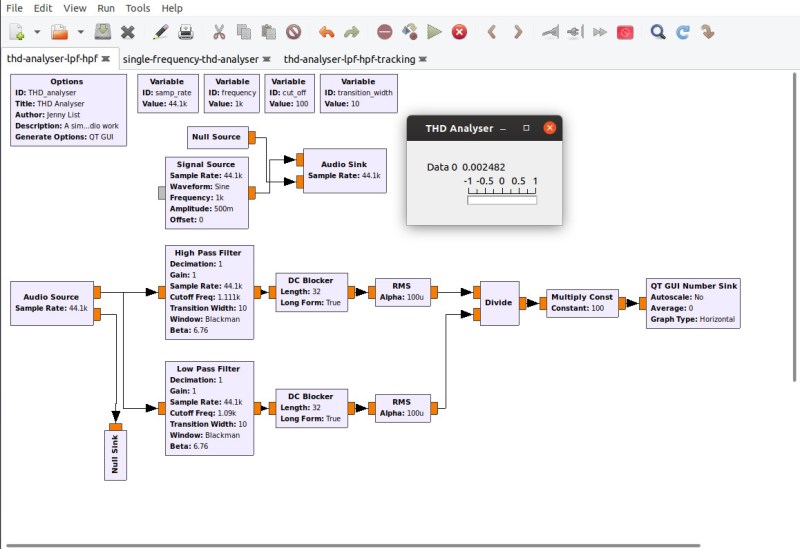Hackaday has among its staff a significant number of writers who also hold amateur radio licenses. We’re hardware folks at heart, so we like our radios homebrew, and we’re never happier than when we’re working at high frequencies.
Amateur radio is a multi-faceted hobby, there’s just so much that’s incredibly interesting about it. It’s a shame then that as a community we sometimes get bogged down with negativity when debating the minutia. So today let’s talk about a few of my favourite things about the hobby of amateur radio. I hope that you’ll find them interesting and entertaining, and in turn share your own favorite things in the comments below.
Homebrew Radios Of The Minimal Kind

Contesting and disaster preparedness may leave me cold, but there’s magic in the minimal when it comes to radio. My introduction to electronics sometime in the 1970s came in the form of the simplest of radios, when my dad bought me a copy of George Dobbs’ Making A Transistor Radio, and showed me how to build a crystal set. That so few parts could form a working radio that pulled a signal from the air and into my headphones without the need for batteries was enough magic to get a 9-year-old me hooked.
Upgrading it to a germanium transistor regenerative receiver set me on the path that led me through university to an electronic engineering degree, and ultimately to writing here at Hackaday. There is in a very literal sense a whole world out there to be unlocked using radios made with relatively small bills-of-material, and though I’ve at times fumed about the tendency for such designs to be a little stuck-in-the-mud there is no reason why minimalist radios can not move with the times. That a quadrature front end for a sound-card SDR can be made from little more than a pile of 74-series chips is a particularly appealing example.
Scrap Televisions As The Gateway To RF Design

I got my amateur radio licence back in the mists of time, when the UK’s Department of Trade and Industry only handed out two types of document. There was the class A licence or the Class B, with the difference being that for the former you had to pass a Morse test but got access to the HF bands while for the latter you had no Morse but were restricted to 144MHz and above. Thus the old men could talk in peace about The War on 80 metres, and the 2 metre band was a lively place.
I had zero interest in Morse so I had a Class B licence, and since radio construction was my passion then as now I set about building for the VHF and UHF bands. I didn’t have a grown-up’s budget so my component supply was limited to what I could pull from scrap consumer electronics, which meant abundant 1970s PAL TV sets and the occasional earlier-model video recorder. There were plentiful VHF-capable inductors and transistors, and every TV tuner and VCR modulator had a set of UHF-capable transistors, so both the 2 metre and 70 cm bands were within my grasp.
There’s a sensible point among all this reminiscing, and it came in a thorough grounding in RF design techniques. RF is seen as a Dark Art by many engineers, and while there are certainly elements of design at these frequencies that edge into the complex it remains true that once you have a feel for the basics it’s something that’s easily possible to master. When you learn about stripline circuits by assembling them from copper wire and tinplate you learn a lot about shielding, impedances, routing, and interactions between neighbouring circuitry. Sure, it’s easy to make mistakes, but in that medium with a soldering iron it’s equally easy to try alternative designs until performance improves. So much UHF and higher RF circuitry is now packed into the silicon that the type of transistor circuits I was messing about with has become rather obsolete and your UHF work is much more likely to be on a PCB than a piece of tinplate, but the same principles apply. I miss those BF180 RF amplifier transistors from scrap 1970s TV sets.
The SDR As A Digital Playground
The age of the homebrew RF tinkerer may be at a close, at least in the manner in which I started it. Nobody at the cutting edge of radio is likely to be messing around with discrete transistor circuits in the 2020s, unless perhaps they are working with extremely exotic devices up in the millimetre wavelengths.It’s all software-defined radios, opaque black plastic boxes that deliver a useful radio experience on a computer but that’s it. No more homebrew, no more tinkering.

You might well agree with the previous paragraph, but SDRs provide me with another of my favourite things about radio, namely that using GNU Radio I now have a general purpose digital signal processing playground. Coupled with a dirt-cheap RTL-SDR stick it gives me the ability to play with all the same building blocks I used to with my soldering iron and many more, at lightning speed in my computer. I can make a radio in no time, and change its parameters at will! The best part is though that it’s not simply restricted to radio. GNU radio works at whatever frequency can be digitised by its input device, and if that happens to be an audio card then it can work with audio too. Most readers last April Fools’ day probably spotted my fake gold USB cable a mile away, but perhaps fewer understood that the simple audio analyser in GNU Radio was completely real. It was inspired by a Supercon talk from Mike Ossmann and Kate Temkin, and if you didn’t see that talk I suggest you give it a watch.
So yes, there’s plenty in amateur radio that interests other radio amateurs but has never interested me, and there are still some aspects of the hobby that can be justifiably criticised. But amateur radio is a very broad church indeed, and above you’ve seen some of the things that keep me interested in it. Now it’s your turn, tell us in the comments: what radios do it for you?
No comments:
Post a Comment